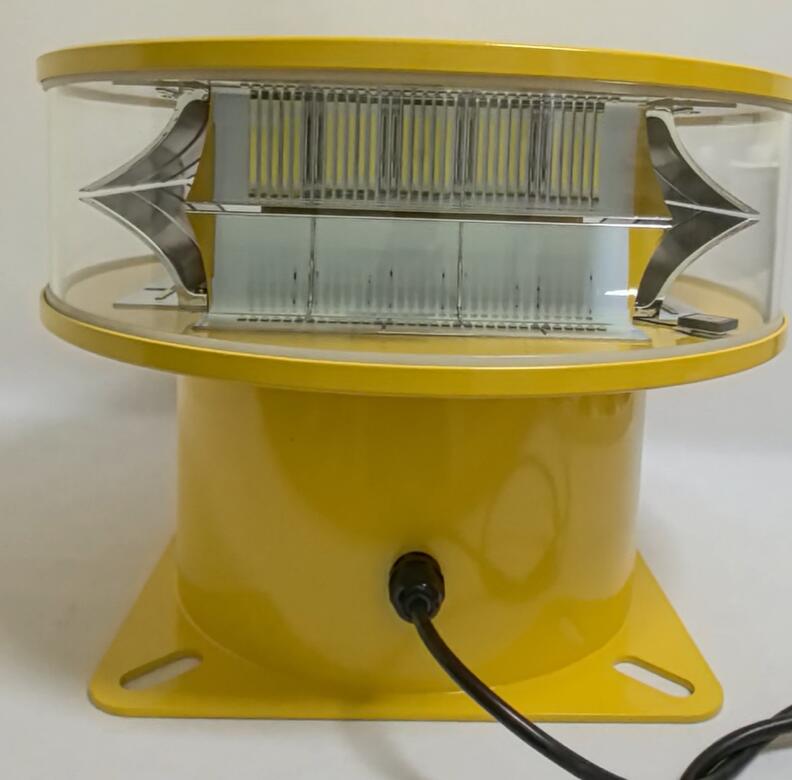Posted: 2024-11-21
Aircraft obstruction warning lights play a crucial role in ensuring the safety of air travel. These lights are designed to make tall structures or obstacles visible to pilots, especially during low-light or adverse weather conditions.
The primary purpose of aircraft obstruction warning lights is to prevent collisions between aircraft and stationary objects. Tall buildings, towers, bridges, and other structures that protrude into the airspace need to be clearly marked. In the daytime, the lights may not be as prominent, but as dusk falls and darkness prevails, they become essential. They act as beacons, guiding pilots to avoid potential hazards.
There are different types of aircraft obstruction warning lights. High-intensity white strobe lights are often used on very tall structures. These lights emit a powerful, intermittent flash that can be seen from a great distance. Medium-intensity white lights are also common and provide a more continuous illumination. Red lights are typically used on the sides of obstacles to indicate their boundaries. The combination of these different light types and intensities creates a comprehensive visual warning system.
The installation and maintenance of aircraft obstruction warning lights are regulated by strict aviation authorities' standards. Owners of structures that require these lights must ensure proper installation and regular upkeep. Any malfunction or outage of the lights could pose a serious threat to the safety of passing aircraft. Regular inspections are carried out to check the functionality of the lights, including the brightness, flash rate, and overall operation.

Moreover, the positioning of the lights on the structure is carefully determined. They need to be placed in such a way that they are visible from all angles that an approaching aircraft might take. This requires a detailed understanding of aviation approach paths and visibility requirements.
In addition to their role in preventing collisions, aircraft obstruction warning lights also contribute to the overall efficiency of air traffic management. By clearly marking obstacles, pilots can more accurately plan their flight paths and make necessary adjustments in a timely manner. This helps to reduce delays and ensure a smoother flow of air traffic.
| aircraft obstruction warning lights | FG5 |
The development of technology has also led to improvements in aircraft obstruction warning lights. Newer models may be more energy-efficient, have longer lifespans, or offer enhanced visibility features. Some lights are now equipped with sensors that can detect changes in ambient light conditions and adjust their intensity automatically.
In conclusion, aircraft obstruction warning lights are an indispensable part of the aviation safety infrastructure. They serve as a vital link between the ground-based structures and the airborne aircraft. Through proper installation, maintenance, and technological advancements, these lights continue to safeguard the skies and enable the safe and efficient operation of air travel. Whether it's a bustling city skyline with numerous skyscrapers or a remote area with a single tall tower, these warning lights are always on duty, protecting the lives of those in the air and on the ground. Their presence gives pilots the confidence to navigate through complex airspaces, knowing that potential obstacles are clearly marked and identifiable.